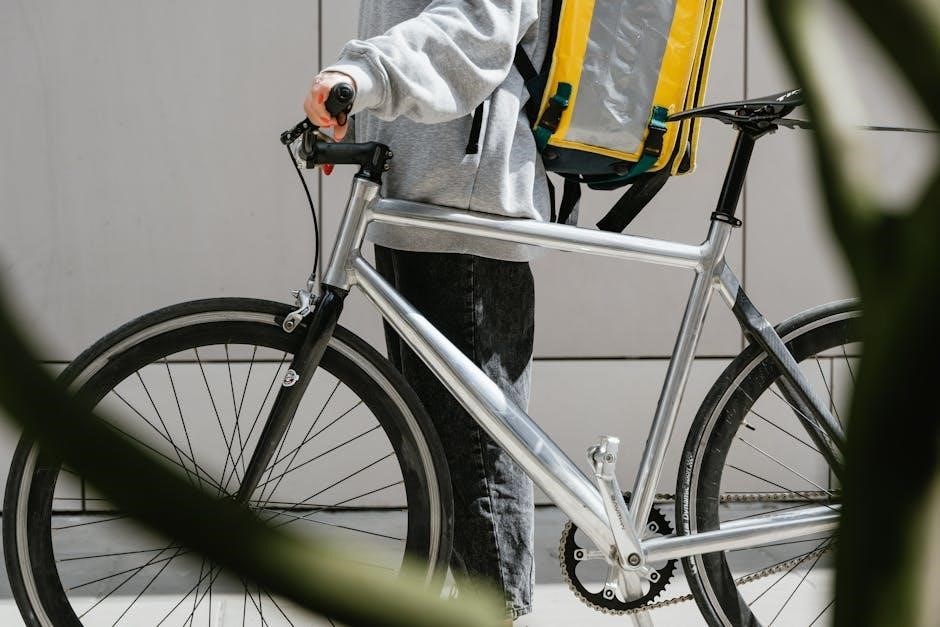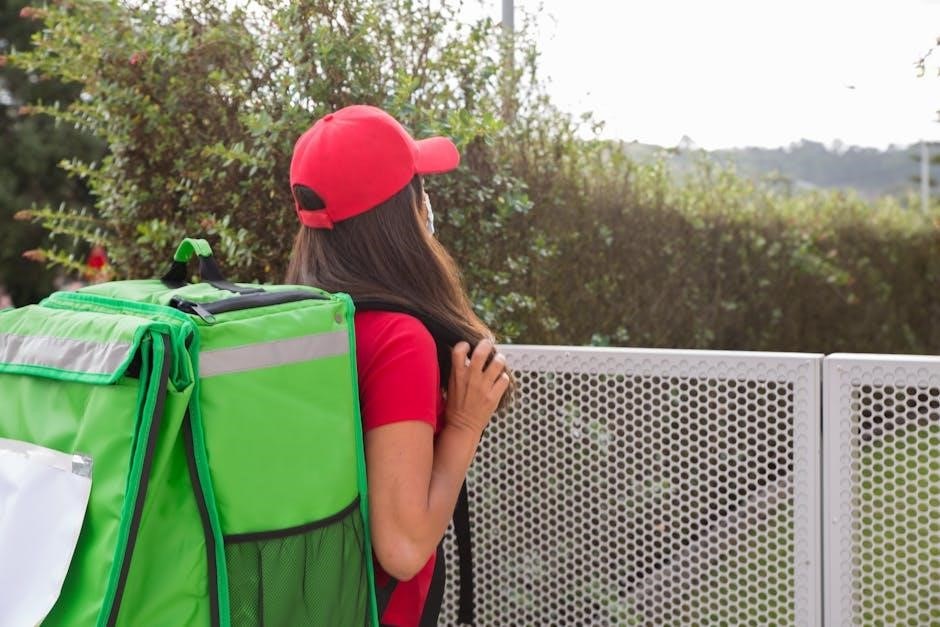
Welcome to the comprehensive guide on Tula baby carriers! Discover how to safely and comfortably use these versatile, ergonomic carriers for your baby from newborn to toddler.
Overview of Tula Baby Carriers
Tula baby carriers are ergonomic, soft-structured carriers designed for comfort and versatility. They offer multiple carrying positions, including front and back options, and are adjustable to fit babies from newborn to toddler (7-45 lbs). Known for their sleek design and durability, Tula carriers provide excellent support for both baby and wearer. They are easy to use, with features like buckle waistbands and adjustable straps, ensuring a snug and secure fit. Tula carriers are a popular choice for parents seeking a practical and comfortable babywearing solution.
Importance of Proper Usage for Safety and Comfort
Proper use of Tula baby carriers is essential for ensuring both safety and comfort for your baby and yourself. Correct positioning supports your baby’s spine and airway, while a snug fit prevents strain. Improper use can lead to discomfort or even safety risks. Always follow guidelines, such as securing straps tightly and maintaining proper head and neck alignment. Regularly check the fit as your baby grows to ensure optimal support. Proper usage enhances your babywearing experience, promoting comfort and confidence for both you and your little one.

Choosing the Right Tula Carrier Model
Choosing the right Tula carrier model depends on your baby’s age, weight, and your personal preference. Each model offers unique features to suit different needs and preferences.
Understanding Different Tula Carrier Models (Free-to-Grow, Explore, Lite)
The Tula Free-to-Grow carrier is designed to adjust from newborn to toddler, offering a snug fit as your baby grows. The Explore model stands out with its ergonomic forward-facing carry option, providing versatility for parents who want to let their baby face outward. The Tula Lite is a lightweight version, ideal for warmer weather or short outings. Each model caters to different needs, ensuring comfort and support for both baby and wearer, with features like adjustable panels and ergonomic design.
Key Features and Benefits of Each Model
The Tula Free-to-Grow model adjusts seamlessly from newborn to toddler, offering a customizable fit without an infant insert. The Explore model includes a unique forward-facing option, promoting baby’s curiosity while maintaining ergonomic support. The Lite version is crafted for lightweight comfort, perfect for summer or short trips, while still providing essential support. Each model ensures optimal comfort, with features like padded shoulder straps, adjustable waistbands, and breathable fabrics, catering to diverse parenting needs and preferences for a secure and enjoyable babywearing experience.

Getting Familiar with Your Tula Carrier
Unbox and explore your Tula carrier to understand its components and features before use, ensuring a smooth and confident babywearing experience from the start.
Unboxing and Initial Setup
Start by carefully unboxing your Tula carrier and inspecting its components. Familiarize yourself with the shoulder straps, waistband, and baby seat. Locate the adjustment buckles and padding for optimal comfort. Before first use, ensure all straps and buckles are secure and functioning properly. Practice putting on the carrier without your baby to get a feel for how it fits and adjusts. This step is crucial for building confidence and ensuring a safe, comfortable experience for both you and your baby.
Understanding the Components of the Carrier
Your Tula carrier is designed with several key components to ensure comfort and safety. The shoulder straps are padded for support and feature adjustment buckles. The waistband provides additional stability and has a secure buckle closure. The baby seat includes a padded insert for newborns and an adjustable panel that grows with your child. The chest clip helps distribute weight evenly, while the leg padding ensures your baby’s comfort. Understanding each part is essential for proper use and adjustment to achieve the perfect fit for both you and your baby.

Step-by-Step Guide to Using Your Tula Carrier
Put on the carrier, adjust shoulder straps, secure waistband, place baby inside, and fasten the chest clip. Ensure a snug fit for comfort and safety.
Front Carry Position: Facing In
To use the front carry position, place your baby facing inward with their legs spread evenly around your torso. Adjust the shoulder straps for comfort, ensuring the carrier sits high on your waist. Secure the waistband tightly and fasten the chest clip at nipple height. Gently lift your baby, guiding their legs into the carrier, and snugly fit them against your body. Tighten the straps while your baby is in the carrier for a secure fit. Ensure their head is above the top of the panel for proper breathing and visibility. This position is ideal for newborns until they develop head and trunk control. Always ensure a snug fit for both you and your baby.
Back Carry Position: Facing In
For the back carry position, place your baby facing inward on your back. Secure the waistband around your natural waistline, then bring the shoulder straps over your shoulders and fasten the chest clip; Ensure the baby’s legs are evenly spread and their bottom sits deeply in the carrier. Tighten the shoulder straps for a snug fit, keeping the baby close to your body. Ensure their head is above the panel for proper breathing and visibility. This position is suitable once your baby has developed sufficient head and trunk control, typically around 6 months. Always ensure a secure fit for safety.
Safety Guidelines and Precautions
Always ensure proper head and trunk support for newborns. Check weight limits and adjust straps for a snug fit. Follow all manufacturer instructions carefully.
Ensuring Proper Head and Trunk Control for Newborns
Proper head and trunk control is crucial for newborns in a Tula carrier. Always ensure your baby’s head is supported and their trunk is upright. Use the front carry position, facing in, until your baby develops sufficient neck strength. Adjust the carrier’s straps to achieve a snug fit, keeping your baby close to your chest. Ensure the carrier’s panel is tightened appropriately to support their back and bottom. Regularly check that your baby’s airway remains unobstructed and they can breathe comfortably. Follow weight and size guidelines for safe use.
Weight and Size Recommendations for Safe Use
Tula carriers are designed for babies weighing 7 to 45 pounds, depending on the model. Ensure your baby meets the minimum weight and size requirements before use. The Free-to-Grow model accommodates newborns to toddlers, while the Explore model supports up to 45 pounds. Always check your baby’s height and developmental milestones to ensure proper fit and support. Adjust the carrier as your baby grows, maintaining a snug and secure position for safety and comfort. Follow the manufacturer’s guidelines to ensure optimal use.
Adjusting the Carrier for the Perfect Fit
Adjust the shoulder straps and waistband for a snug, secure fit. Ensure proper support and comfort as your baby grows.
How to Adjust the Shoulder Straps and Waistband
Properly adjusting your Tula carrier ensures a comfortable and secure fit for both you and your baby. To adjust the shoulder straps, locate the buckles and gently tighten or loosen them to achieve the desired snugness. The waistband should be adjusted by pulling the straps to fit your natural waistline, providing optimal support. Ensure the baby panel is centered and snug against your body. Regular adjustments may be needed as your baby grows, ensuring proper head and trunk control. This ensures a safe and comfortable experience for your little one.
Tips for a Snug and Secure Fit
Ensure a snug fit by tightening the shoulder straps evenly and adjusting the waistband to sit comfortably at your natural waistline. Pull the baby panel snugly against your body for proper support. Regularly check the fit as your baby grows, ensuring the carrier adapts to their size. For added security, make sure the buckles are fully fastened and the straps are not overly tight. A well-fitted carrier promotes comfort and safety for both you and your baby, allowing for a enjoyable babywearing experience.

Additional Features and Uses
Explore advanced features like breastfeeding support and ergonomic designs. The Explore Baby Carrier offers forward-facing options, while all models ensure comfort and versatility for everyday use.
Breastfeeding While Using the Tula Carrier
Breastfeeding in your Tula carrier is convenient and discreet. Ensure your baby is in the front-facing position, with proper head and trunk support. Adjust the shoulder straps to bring your baby close, allowing them to nurse comfortably. Keep the waistband snug to maintain stability. This feature promotes bonding and flexibility for parents. Always ensure your baby’s airway is clear and they are in a safe position while nursing. Practice makes perfect, so try this at home before heading out.
Special Features of the Explore Baby Carrier
The Tula Explore Baby Carrier is a versatile, all-in-one option offering unmatched flexibility. It features an ergonomic forward-facing carry, a adjustable panel that grows with your baby, and supports weights from 7 to 45 pounds. Designed for comfort, it allows for front and back carrying positions, ensuring proper spine alignment. The Explore is perfect for newborns through toddlers, with a sleek, simplistic design that enhances usability. Its adaptability and durability make it a top choice for parents seeking a carrier that evolves with their child’s needs.
Mastering your Tula carrier ensures safety, comfort, and a joyful babywearing experience. Always follow guidelines, adjust for the perfect fit, and enjoy the journey with your baby!
To use your Tula carrier effectively, ensure proper positioning with baby facing in for front carries until head and trunk control develop. Adjust shoulder straps and waistband for a snug fit, ensuring the carrier grows with your baby. Always follow weight and size guidelines for safety. Practice unboxing and understanding components beforehand. For newborns, maintain proper head support and tighten the base for a secure fit. Explore features like breastfeeding compatibility and ergonomic designs for ultimate comfort. Regularly check adjustments for a perfect fit as your baby grows.